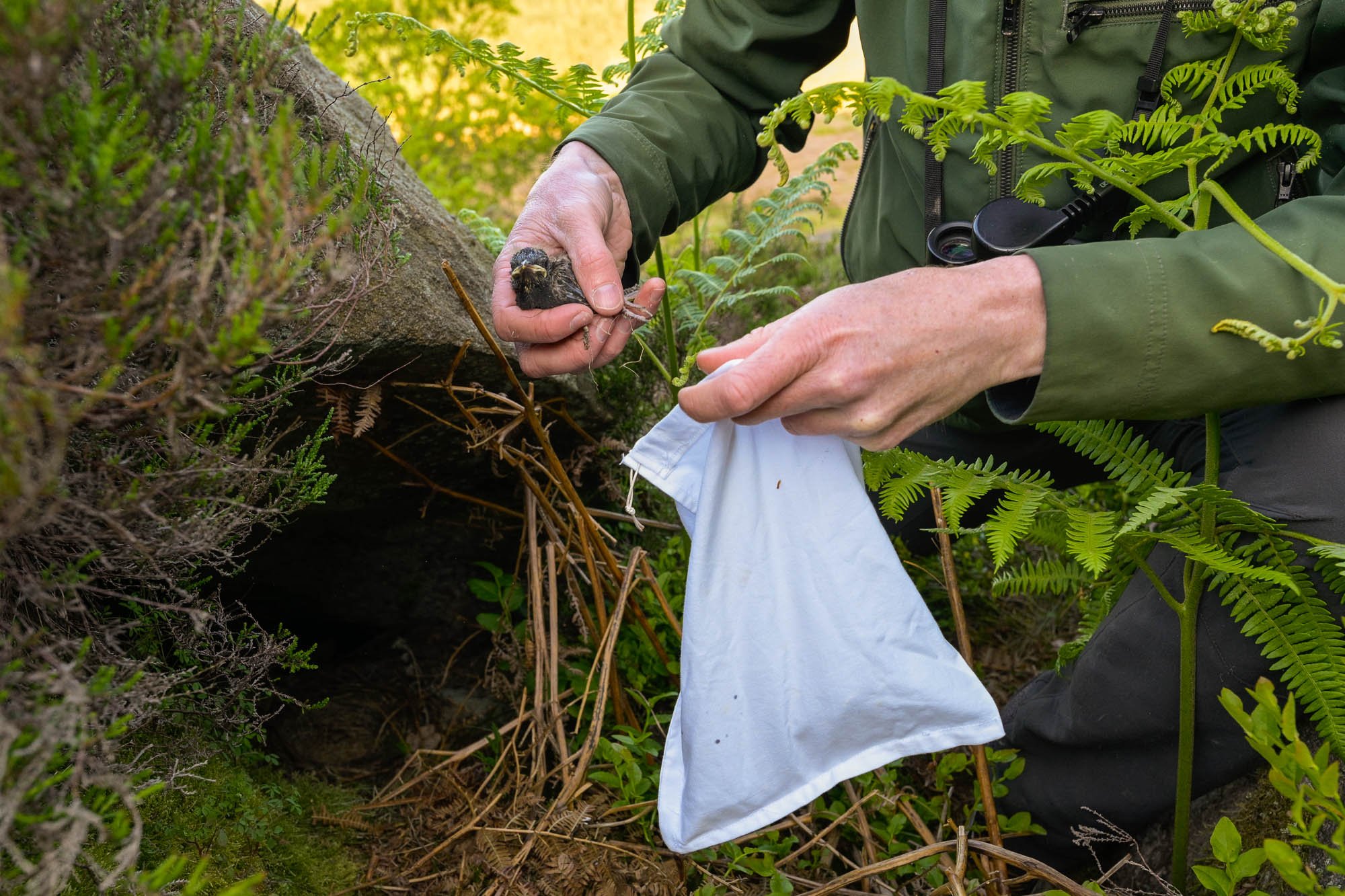Ring Ouzel
Ring ouzels are birds of our uplands and can be found in the UK breeding from Dartmoor to Scotland on mountains and moorlands generally above 250 metres, thay are a specialist upland species that prefers a rocky habitat. These members of the Thrush family are summer visitors to the UK, arriving in mid-March and then departing during September and October, spending the winter as far south as North Africa.
Similar in size to their close relative the blackbird, these “mountain blackbirds” (as ring ouzels are also known) are striking and charasmatic birds. With a silvery wing panel, the darker males have a white bib and the lighter browner females have a more creamy bib.
As a result of an overall reduction in their breeding population and breeding range, ring ouzels are on the UK Red List of birds of conservation concern.
NB: By clicking on the images in this blog, they will open in a lightbox.
I first became aware of ring ouzels in the late 1990s whilst living and working in the Potteries in Staffordshire on the edge of the Peak District. During this time, my summer evenings were spent climbing on the gritstone edges of the Dark Peak. Being close, the Roaches were a popular location that I climbed at most weeks. It was during this time that voluntary climbing restrictions were put in place on Hen Cloud on the Roaches to protect a pair of ring ouzels that had nested on it.
Whilst ring ouzels have not bred on Hen Cloud for many years, the Peak District is home to a good population of breeding birds estimated to be around 150 pairs. The Eastern Edges of the Peak District hold a sizeable percentage of these breeding birds.
Over the last three years, together with another wildlife photographer and good friend Paul Goodliffe, I have spent many long hours watching and photographing the ring ouzels that breed in the Peak District.
Ring ouzels nest in a varierty of locations within their preferred rocky habitat, including ledges on crags, under boulders and on the ground, typically with bilberry, bracken or heather as cover.
The Peak District was the first national park in the UK. Whilst not the largest, it is one of the most popular national parks in the UK. Being close to Sheffied, the Eastern Edges see a high number of visitors wth Stanage Edge being one of the most popular locations for rock climbing in the UK.
For more than twenty years, various interested parties (including The British Mountaineering Council, the Peak District National Park Authority, The Royal Society for the Protection of Birds and more recently the Eastern Moors Partnership) have been working together to ensure the ongoing successful breeding of ring ouzels whilst allowing climbers, walkers and other visitors to enjoy their presence whilst visiting the Eastern Edges. The BMC manage the voluntary climbing restrictions on these crags. This work is now led by Kim Leyland.
During April and May, Kim and his team of volunteers will be out “ouzelling” on the Eastern Edges locating where the ring ouzels have set up their territories and then where they have nested. Each breeding pair will be evaluated to determine what protection is required for their nest to ensure that they succesfully breed. Where possible, the aim is to leave the ring ouzels alone. Some birds are more tolerant of humans and less prone to disturbance, even nesting by the side of paths. Others are more prone to disturbance, particulary those that chose to nest on popular climbs, and temporary climbing restrictions may be required to protect them.
During the time that we spent watching and photographing ring ouzels, it was reassuring to see that when voluntary climbing restictrictions were put in place they were complied with. On several occasions, Paul and I were approached by climbers who were interested to know what we were photographing. We always received a positive response when we explained that it was ring ouzels.
As part of the monitoring work, together with the Sorby Breck Ringing Group, Kim has started a programme of ringing the juvenile ring ouzels in the nest before they fledge. The aim is that this will give a better understanding of these birds and ultimately to help with their conservation.
If you are bird watching, photographing or just enjoying being out in the Peak District, in order to have a positive impact on the breeding population of ring ouzels, look out for and observe signs of them during the breeding season. Whilst some ring ouzels are less prone to disturbance others are not, if you hear an alarm calling ring ouzel (a loud "tac-tac-tac") move away from the area as soon as possible and then watch from a safe distance. Comply with all voluntary access restrictions even if you are not climbing. Keep dogs on leads in all areas from the 1st March to 31st July.
If you want to keep up with the latest Eastern Edges ring ouzel news, Kim posts updates through the season on X (formerly Twitter) @kimleyland. You can also report Ring Ouzel sightings in April and May to Kim via X.
I would like to thank Kim Leyland for allowing me to join him and to document the work that he and the Sorby Breck Ringing Group are undertaking on ring ouzels. I would also like to thank Ben Andrew at RSPB Images (who represent my work as a photographer) and John Mead at the Eastern Moors Partnership for their help with this project. A selection of images from this work on ring ouzels will shortly be availabe from RSPB Images.




































